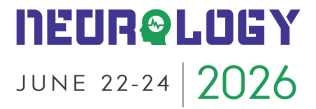Title : A computational approach to evaluate the impact of chemical pathways on brain activity on a broad scale
Abstract:
One of the most important problems in modern neuroscience is determining how pharmacological substances affect brain function. There is currently no methodical way to assess these effects in whole-brain models, which usually concentrate on macroscopic phenomena, whereas pharmaceutical interventions function at the molecular level. Here we tackle this problem by introducing a computational method for brain simulations based on mean-field models with biophysical foundations that incorporate membrane conductances and synaptic receptors, as seen in the anesthetic example. We demonstrate that, as seen experimentally in profound anesthesia, anesthetics that target GABAA and NMDA receptors can cause the brain to change to generalized slow-wave patterns. In order to support our ideas, we show that these slow-wave states are less sensitive to outside stimuli and have functional connectivity that is limited by anatomical connection, which is consistent with observations made in anesthetic states in other animals. Our method offers a strong framework for comprehending how pharmacological actions at the molecular level affect whole-brain dynamics since it is based on mean-field models that take molecular reality into account.




